Osaka’s Danjiri Festivals: Beyond Kishiwada
One of the most iconic festivals in Osaka’s Senshu Region is the danjiri festival. The Kishiwada danjiri festival, held in mid-September, is particularly famous and attracts around 500,000 visitors. People come from all over to experience the vibrant energy of this festival.
What is a Danjiri?
A danjiri festival is a celebration of the harvest. Among these festivals, the one held in Kishiwada is particularly famous throughout Japan. However, danjiri festivals take place not only in Kishiwada but also throughout southern Osaka and part of Hyogo Prefecture during the second week of October.
During the festival, people pull the danjiri around their towns. A danjiri is typically a wooden structure on wheels that features two roofs—one large and one small—resembling a traditional Shinto shrine roof.
Those who ride on top of the danjiri and appear to be dancing are called daikugata, and they attract a lot of attention. It’s safe to say that most kids in Kishiwada dream of becoming a daikugata one day.
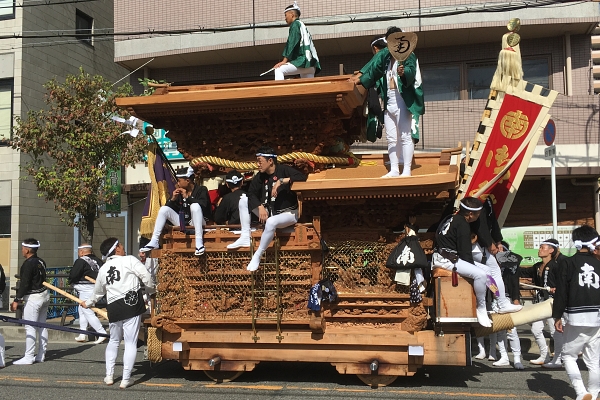
Maneuvering a danjiri is quite simple. The steering columns, known as teko, are located at the front and back of the danjiri, referred to as mae-teko and ushiro-teko, respectively. The mae-teko is primarily used as a brake, while the ushiro-teko helps to make turns.
As the danjiri approaches a corner, the person at the ushiro-teko pulls the rope attached to it, while the mae-teko assists in reducing and controlling the speed.
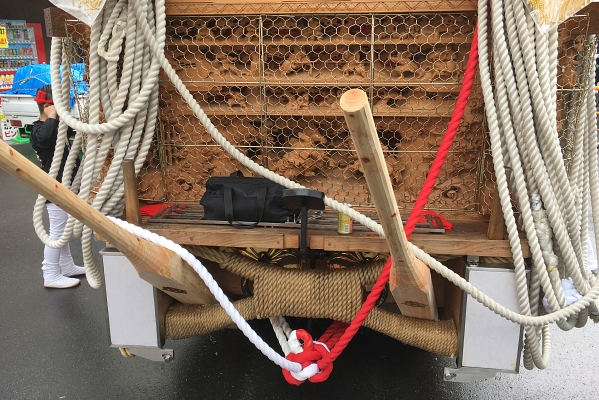
The History of Danjiri Festivals
It is unclear when the danijri festivals began, but some believe the first one took place at Sannomaru Shrine near Kishiwada Castle in 1703.
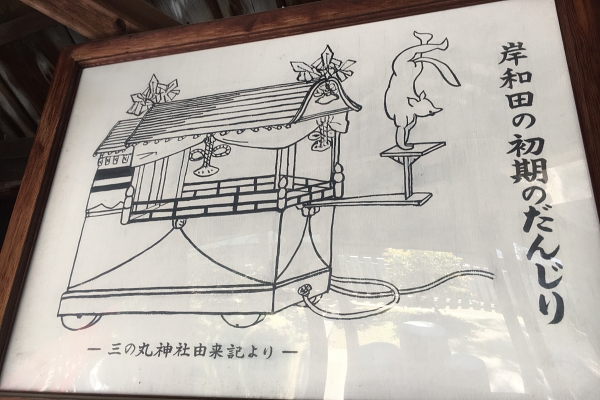
Danjiri used to be significantly smaller than they are today. It was only after the end of either the Meiji or the Edo Period that the larger danjiri became common. Furthermore, it wasn’t until the end of the Showa Period in 1989 that the media began to focus on danjiri festivals, which contributed to their popularity across Japan.
Mikoshi vs Danjiri
An iconic feature of many Japanese festivals is the large floats known as mikoshi. Unfortunately, those unfamiliar with them may often confuse a mikoshi with a danjiri, especially since multiple festivals can occur on the same day and even in the same location.
The key distinction between a danjiri and a mikoshi is that a mikoshi is carried, whereas a danjiri is pulled.
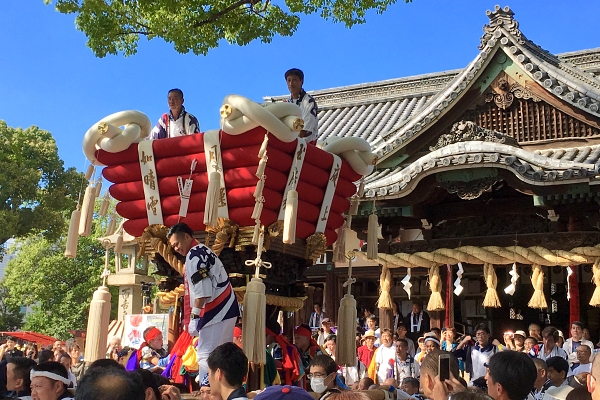
One key difference between mikoshi and danjiri is that mikoshi are typically associated with a specific shrine, while danjiri represent the community as a whole.
Additionally, the primary purpose of a mikoshi is to carry the idol of a shrine’s deity throughout the city for celebratory events, whereas a danjiri does not contain any idols.
Kami-Danjiri and Shimo-Danjiri
In the Senshu Region, there are two kinds of danjiri: kami-danjiri and shimo-danjiri. While Shimo-danjiri always refer to the type of danjiri found in and around Kishiwada, Kami-danjiri are common in many other areas in Osaka. Since Kami-danjiri is more common, there are several subtypes of kami-danjiri.
Characteristics
When comparing Kami-danjiri and Shimo-danjiri, several differences become apparent.
A Kami-danjiri features a bar, known as a ninaibo, that surrounds the main part of the danjiri, whereas Shimo-danjiri do not have this bar. Additionally, Kami-danjiri typically have a lion figure, called a shigami, on the front of their roofs, which is absent in Shimo-danjiri.
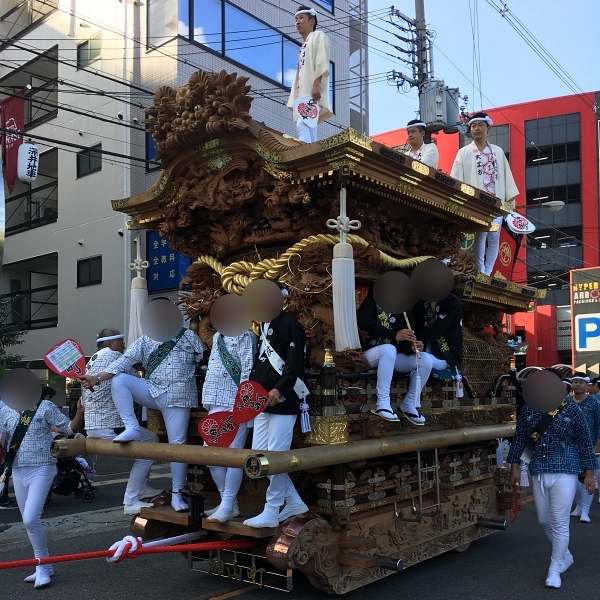
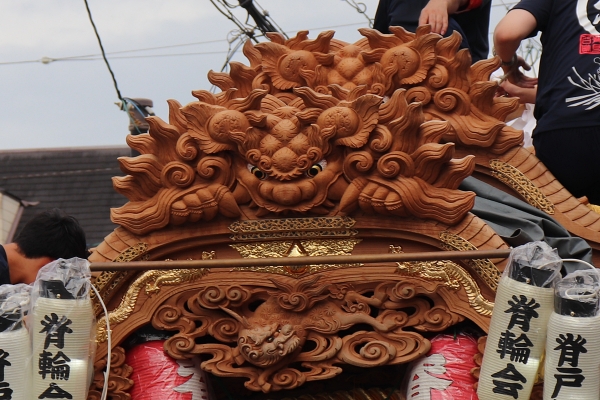
For many years, kami-danjiri were the predominant style of danjiri in the northern Senshu region, while shimo-danjiri were found only in Kishiwada.
However, danjiri experience significant wear and tear and require substantial maintenance. Typically, a city will replace a danjiri every 80 to 100 years. Due to this regular turnover, shimo-danjiri are gradually replacing kami-danjiri. Not only are shimo-danjiri easier to steer, but they are also generally more popular.
Danjiri, a Close Up
Yarimawashi
Danjiri in the Senshu Region typically perform a yarimawashi, where people run around a corner while pulling the danjiri quickly behind them.
Yarimawashi is one of the most famous aspects of the Danjiri festival, known for being both dangerous and thrilling to watch as this large wooden structure speeds around the corners.
The excitement comes with significant risks. For instance, the danjiri can topple over if it is going too fast, causing the people on top to fall off. In more severe cases, the danjiri may crash into a building or another obstacle. However, as long as no one is injured and the danjiri is still able to move, the participants typically continue as if nothing has occurred.
History on Wheels
While many people focus on the individuals on the roof or the thrilling moment when the danjiri performs a yarimawashi, the true marvel of the danjiri lies in the vehicle itself.
If you have the opportunity, take a close look at a danjiri; you will notice that it is adorned with intricate and beautiful carvings. Each danjiri features a unique theme, and the carvings depict scenes from historical battles or local folklore. Because of these stunning and valuable carvings, people often refer to danjiri as “a moving history hand-scroll.”
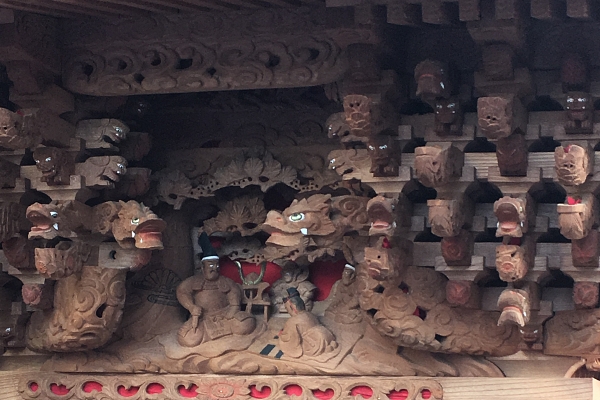
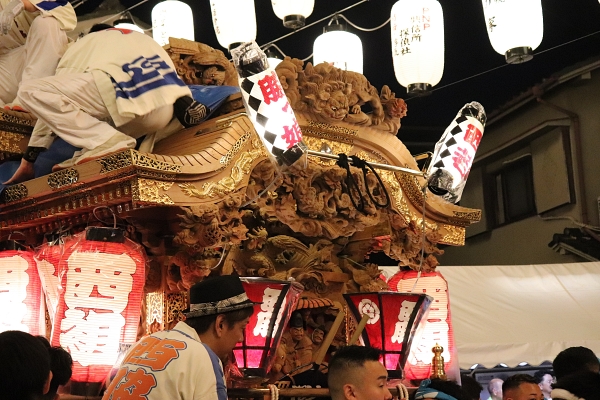
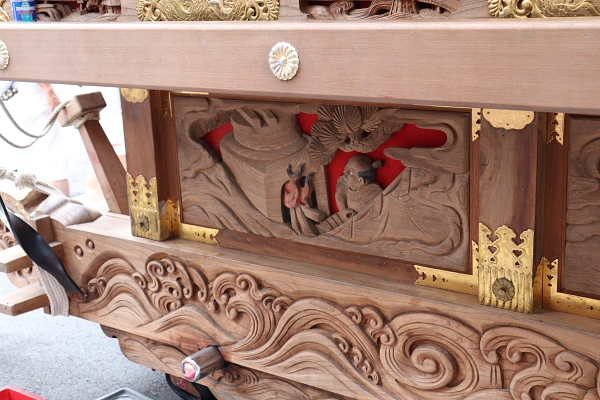
Local Variations
Kishiwada’s danjiri festival is the most famous and tends to attract large crowds. However, due to the size of the audience, you may find it difficult to get a good view of the danjiri.
To fully appreciate the danjiri in action, consider attending a festival in a nearby town. These local events often feature their own unique styles and traditions!
Izumiotsu
In Izumiotsu, they ram their danjiri together in what is called kachiai. These kachiai are very popular and draw large crowds into the street to watch these giant wooden cars slam into each other.
Fukai in Sakai
During the danjiri festival, participants engage in a ritual called “hiire eikou,“ where they adorn the danjiri with lanterns after sunset. Once the lanterns are lit, the danjiri will no longer perform yarimawashi, as doing so at night is considered more dangerous.
However, the Fukai team appears to enjoy a bit of risk-taking and continues to perform yarimawashi until the festival concludes– typically around 10 o’clock at night.
Hannan City
South of Izumisano, in places like Hannan City, are a special kind of danjiri called a yagura.
Truthfully, they do look very similar to danjiri but have a few key differences:
- Yagura have much bigger wheels than danjiri and only two of them.
- Danjiri have several people on the top roof who jump around and help to navigate the danjiri. Yagura, do not.
- Yagura have beautifully detailed tapestries on their sides.
- Danjiri and yagura both have large drums. However, a danjiri’s drum is located on the inside, while the yagura’s is located on the outside.
Hirano
If you find yourself in Osaka City during the summer, you still have the opportunity to experience a danjiri festival!
Hirano, located just a few minutes from the heart of Osaka City, hosts the largest danjiri festival within the city’s limits. Unlike other danjiri festivals, Hirano’s danjiri does not have a teko, which means it moves a bit slower.
However, it is still a high-energy festival!
Danjiri festivals offer a wonderful experience and are a cherished part of Osaka’s rich culture. Even the smallest towns take great pride in using these events to showcase their histories and folklore. The enthusiasm and pride that communities have for these festivals will help ensure that this tradition continues for many years to come.
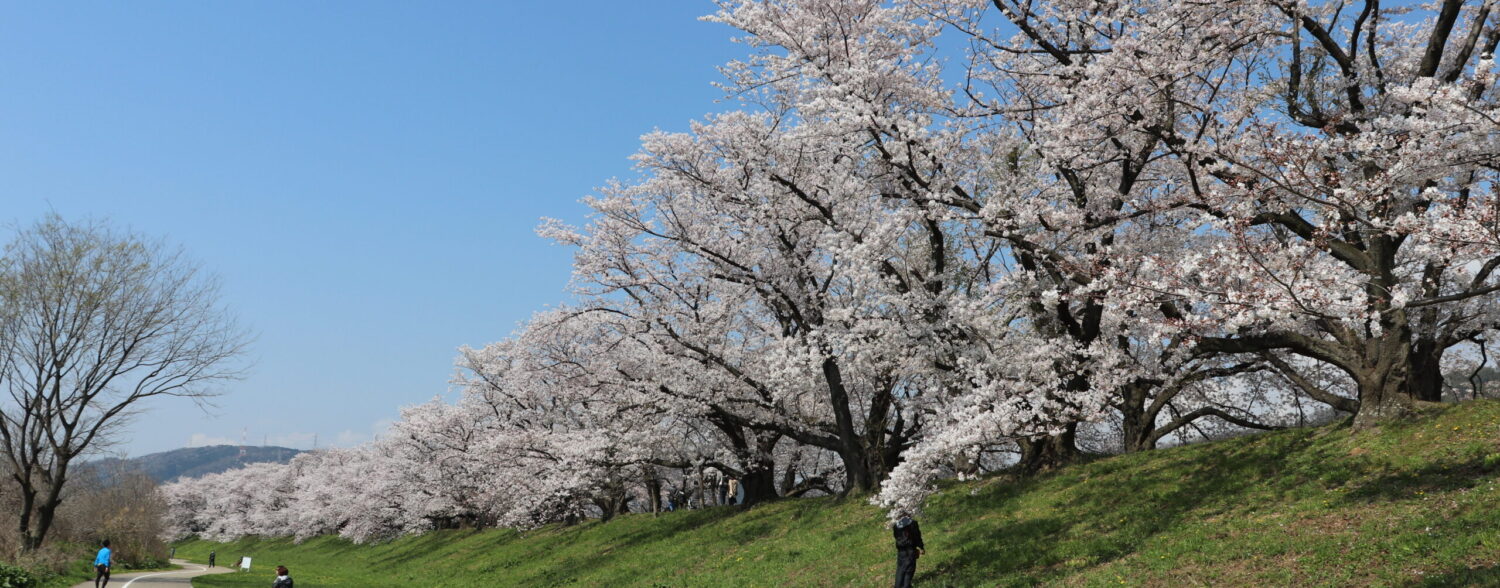
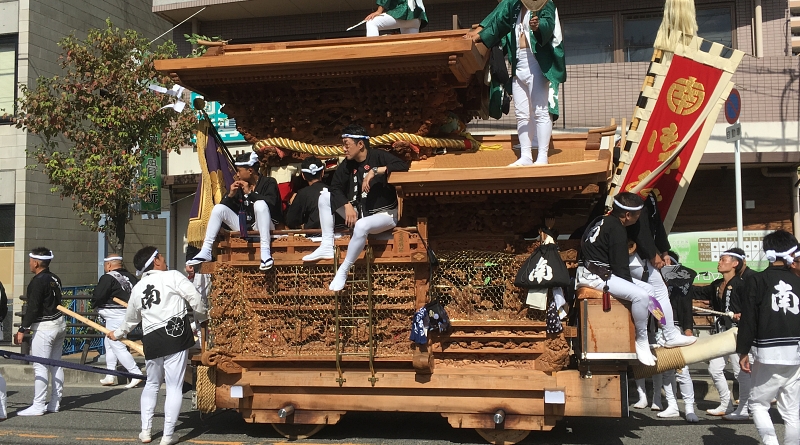
Leave a Reply